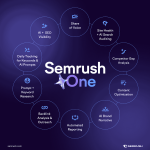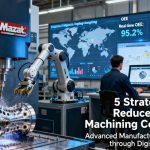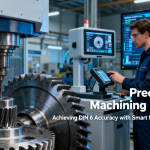Introduction:
The modern workplace is undergoing a profound transformation, driven not just by the rise of automation but by a deeper rethinking of how work actually happens. While automation has long promised efficiency and speed, organizations are beginning to realize that true progress depends on more than replacing human tasks with machines. It requires understanding the complex interplay of processes, people, and technology that together define how value is created.
This shift demands a fresh perspective on work—one that looks beyond simple task automation to the broader system of activities and interactions that form daily operations. Embracing this new mindset can help businesses unlock hidden efficiencies, foster innovation, and respond dynamically to changing market demands. At the heart of this transformation lie tools and insights that illuminate the real flow of work, enabling smarter decisions and more meaningful improvements.
The limitations of traditional automation:
Traditional automation typically focuses on repetitive, rule-based tasks that can be programmed for machines or software bots. While this approach reduces manual effort and errors in straightforward activities like data entry or invoice processing, it often overlooks the nuanced, interconnected nature of business operations.
Many processes involve exceptions, decisions, and cross-functional collaboration that resist rigid automation. Simply automating isolated tasks without understanding their place in the bigger picture can lead to bottlenecks, duplicated efforts, and even increased complexity. Moreover, traditional automation may create a false sense of control, where organizations assume they’ve optimized processes when in reality underlying inefficiencies remain hidden.
How work is more than tasks it’s about systems and interactions:
Work is fundamentally a network of interactions between people, systems, and information flows. Each task is embedded within a broader context where timing, sequence, and communication affect outcomes. Understanding this web of relationships is essential to reimagining how work truly gets done.
When businesses focus solely on individual tasks, they risk missing systemic issues that impact performance, such as delays caused by handoffs, misaligned priorities, or resource constraints. A systems perspective reveals these interdependencies, helping organizations redesign workflows that support collaboration, agility, and value delivery rather than just efficiency. – Alex Taylor, Violationwatch
The role of data in revealing hidden work patterns:
Data has become the lifeblood for uncovering the realities of how work flows through an organization. Every digital interaction, transaction, or system log generated data points that, when analyzed properly, reveal patterns invisible to traditional management methods.
Process mining technology leverages this data to visualize actual workflows, identify deviations from ideal processes, and measure performance in real-time. This insight enables leaders to detect inefficiencies, compliance issues, and opportunities for improvement that would otherwise remain hidden. Importantly, it transforms subjective opinions about work into objective, data-driven facts.
Embracing companies to gain deeper insights:
Partnering with process mining companies allows organizations to access advanced tools and expertise that transform raw data into actionable intelligence. These companies specialize in analyzing vast volumes of event logs and extracting meaningful process models that reflect how work is genuinely executed.
Using process mining software, businesses can drill down into granular details such as cycle times, bottlenecks, and variant processes across departments. This transparency supports informed decision-making and continuous improvement initiatives. By relying on factual evidence rather than assumptions, companies can prioritize changes that deliver the greatest impact with confidence.
Integrating human judgment with digital process insights:
While data and automation are powerful, human judgment remains crucial in reimagining work. Insights from process mining provide the facts, but interpreting those facts and designing solutions require the creativity and empathy of people who understand the organizational context.
Effective transformation balances digital tools with human expertise, ensuring that new workflows respect employees’ capabilities and promote engagement. Leaders must foster a culture where data-driven insights guide collaboration, innovation, and problem-solving rather than replace the human element. This integration leads to smarter, more adaptable work systems.
Overcoming challenges in transforming work beyond automation:
Shifting from automation to holistic work reimagination is not without hurdles. Organizations may face resistance due to fear of change, limited data literacy, or legacy systems that complicate process visibility. Additionally, interpreting complex process data can overwhelm teams unfamiliar with these analytical approaches.
To overcome these challenges, companies must invest in training, change management, and technology upgrades. They should start small with pilot projects that demonstrate value and build momentum. Partnering with experienced companies can also ease adoption by providing guidance and proven methodologies that align with organizational goals.
The future of work shaped by intelligent process innovation:
Looking ahead, the future of work will be defined by continuous process innovation powered by intelligent technologies and human collaboration. Automation will evolve from simple task execution to adaptive systems that learn and improve from ongoing feedback.
Organizations that embrace this vision will not only optimize efficiency but also enhance employee satisfaction, customer experiences, and business agility. They will harness process mining technology as a cornerstone of their transformation, gaining a real-time understanding of work that drives smarter, faster, and more sustainable outcomes. – Laura Beaulieu, Holistiplan
Conclusion:
Reimagining how work really gets done requires moving beyond the narrow focus on automation to a comprehensive understanding of processes, systems, and people. The hidden dynamics of work can only be revealed through data-driven insights provided by companies that bring clarity to complexity.
By combining technology with human insight, organizations can design workflows that deliver real value, foster innovation, and adapt to future challenges. This holistic approach ensures that work evolves from a series of automated tasks into a living, responsive system that powers business success in the digital age.
Lynn Martelli is an editor at Readability. She received her MFA in Creative Writing from Antioch University and has worked as an editor for over 10 years. Lynn has edited a wide variety of books, including fiction, non-fiction, memoirs, and more. In her free time, Lynn enjoys reading, writing, and spending time with her family and friends.















